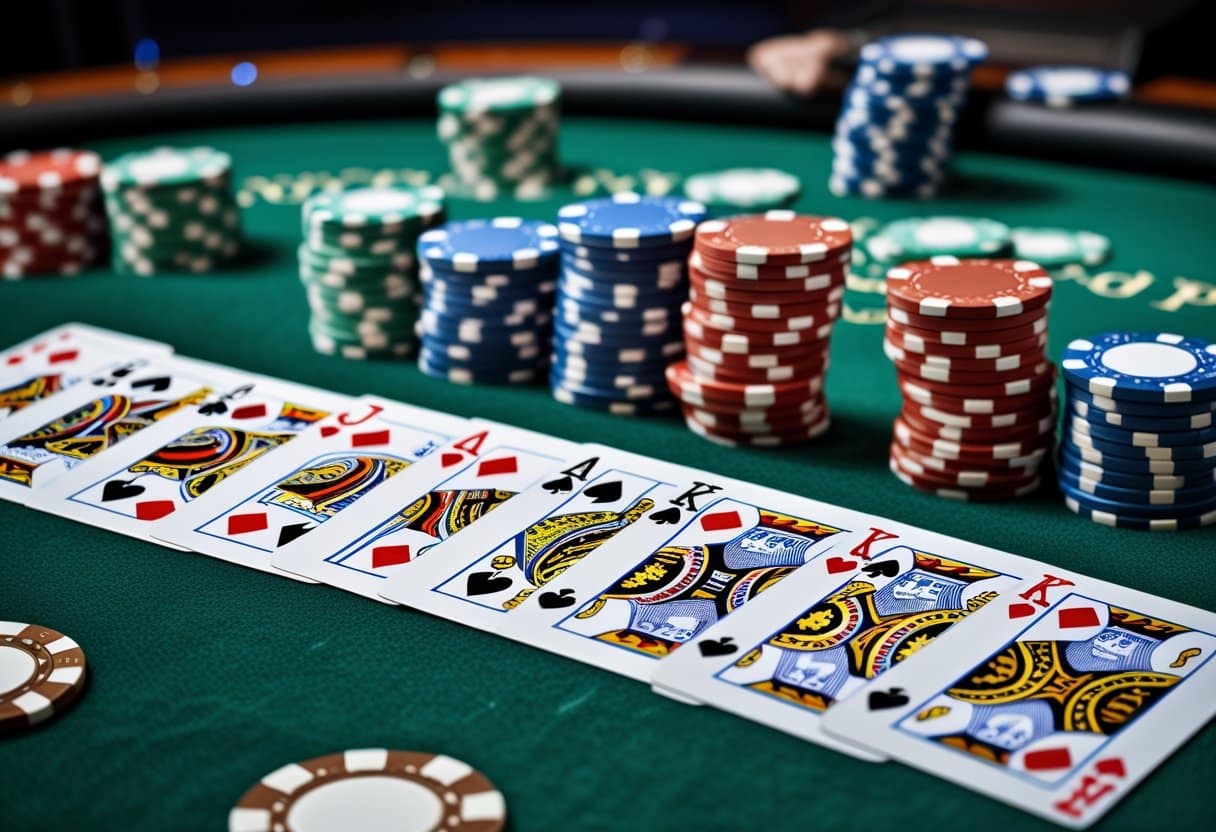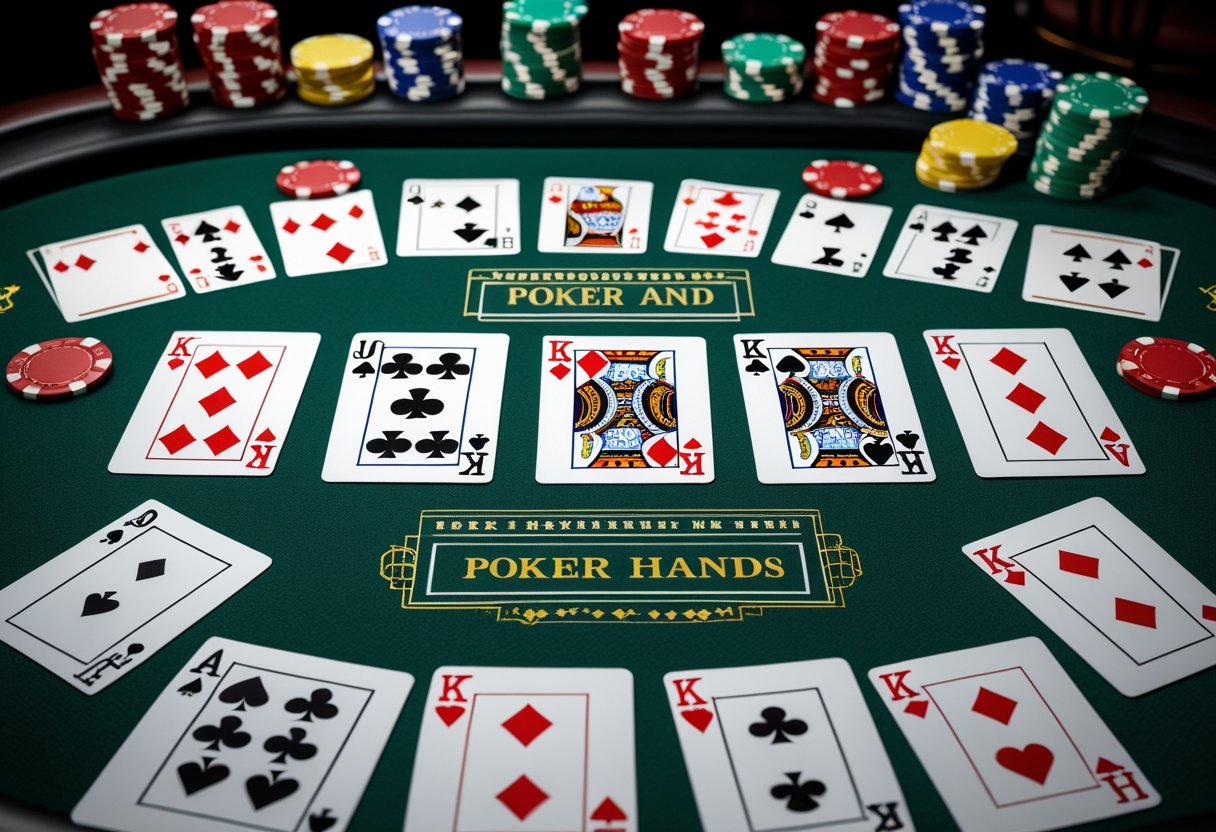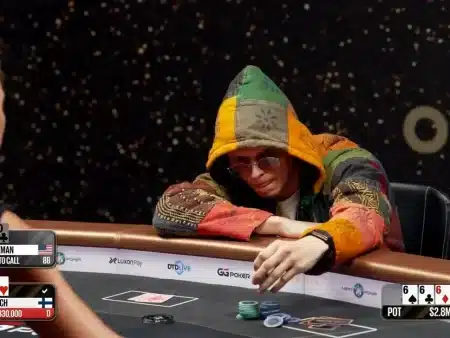Poker’s a wild mix of skill, strategy, and luck, and knowing your hand rankings is just—well, it’s absolutely necessary if you want to win anything. Hands are ranked from the top (that’s the royal flush) all the way down to high card, which, let’s be honest, nobody’s thrilled about. A royal flush is A-K-Q-J-10, all the same suit, and it’s so rare that most players never even see one in their lifetime.

If you want to make smart choices at the table, you need to know these rankings. When two people have similar hands, the one with the higher cards walks away with the pot.
For example, if both players have flushes, whoever’s got the highest card in their flush wins. It really comes down to details like that.
Learning these rankings helps beginners avoid those awkward “wait, who won?” moments. No matter if you’re playing Texas Hold’em or something else entirely, these rankings mostly stay the same.
Understanding Poker Hand Rankings

Knowing which hands beat what is just part of the game. The rankings are set up based on how hard it is to actually make each hand.
What Is the Standard Poker Hand Ranking?
Standard poker hand rankings start with the Royal Flush—yeah, the one everyone dreams about but almost never gets. That’s A-K-Q-J-10, all matching suits.
Next up is the Straight Flush: five cards in a row, all the same suit. It’s not quite the Royal, but it’s still a monster.
Then there’s Four of a Kind—four of the same rank, plus a random fifth card. Full House is right after: three cards of one rank and two of another. People call it “three of a kind with a pair,” but “boat” sounds cooler.
A Flush is any five cards of the same suit, not in order. Straights are five cards in order, but suits don’t matter.
Then you’ve got Three of a Kind, Two Pair, and One Pair—these are your bread-and-butter hands.
At the bottom is High Card. If you’ve got nothing else, you’re just hoping your single high card is better than everyone else’s.
The Importance of Hand Rankings in Poker
Hand rankings are the backbone of any poker strategy. If you don’t know what beats what, you’re just guessing out there.
In Texas Hold’em, you’re trying to make the best five-card hand using your two hole cards and the five community cards. Understanding hand strength helps you figure out whether you should chase a draw or just let the hand go.
Strong players are always thinking about how their hand stacks up against the board—and what their opponents might be holding. It’s a constant puzzle.
Betting decisions hinge on these rankings. If you’ve got a strong hand, you’ll usually want to bet more. If not, maybe it’s time to fold.
Eventually, you stop thinking about the rankings and just know them. That’s when you can really start playing the player, not just the cards.
Differences Between Poker Variants
Most poker games use the standard hand ranking, but there are some weird exceptions. Texas Hold’em and Omaha stick to the basics.
But in games like Lowball or Razz, the lowest hand wins. Straights and flushes might not even count against you, which feels odd if you’re used to regular poker.
Wild cards shake things up, letting you make hands like “Five of a Kind.” That’s not possible in a regular deck.
Short Deck poker (also called Six Plus Hold’em) takes out all the cards below a six. Suddenly, flushes become harder to get than full houses, so the rankings change a bit.
Stud games and community card games build hands differently, but the ranking order usually stays the same.
The Top Poker Hands Explained
Poker hands are ranked by how rare—and valuable—they are. The top three hands are what everyone hopes for, but they almost never show up.
Royal Flush
A Royal Flush is the absolute best. Ace, King, Queen, Jack, Ten, all the same suit. If you get this, well, you’re not losing.
For example: A♥ K♥ Q♥ J♥ 10♥. That’s the dream.
It’s unbelievably rare—odds are about 1 in 649,740 in a five-card draw. You could play for years and never see one.
All Royal Flushes are equal, no matter the suit. Hearts, spades, clubs, diamonds—it’s all the same.
If you hit this, you’re unbeatable. That’s it. No hand can top it.
Straight Flush
A Straight Flush is next in line. Five cards in a row, all the same suit.
Example: 9♣ 8♣ 7♣ 6♣ 5♣. That’s a nine-high straight flush in clubs.
There are different strengths here, depending on the highest card. King-high beats queen-high, and so on.
The lowest straight flush is 5-4-3-2-A, sometimes called a “wheel” or “bicycle.” Poker names are weird, right?
This hand only loses to a Royal Flush. Odds are roughly 1 in 72,192, so yeah, still pretty rare.
Four of a Kind
Four of a Kind—or “quads”—is four cards of the same rank, plus a random fifth card (the kicker).
Example: 8♥ 8♦ 8♣ 8♠ K♥. That’s four eights with a king kicker.
The card you have four of is what matters most. Four aces is the best, four twos is the worst.
If two players somehow both have quads (which can only happen with shared cards), the kicker decides who wins.
It’s not as rare as the flushes above, but it’s still pretty tough to beat.
Middle-Tier Poker Hands
Right in the middle are three hands that show up more often, but still pack a punch. They’ll win you a lot of pots if you play them right.
Full House
A Full House is three cards of one rank and two cards of another. People call it a “boat” or “full boat.”
The three-of-a-kind part comes first for ranking, then the pair. Kings full of aces (K-K-K-A-A) beats queens full of aces (Q-Q-Q-A-A).
Full houses show up a lot in games like Texas Hold’em, especially when the board pairs up. Watch out—someone might have a boat when you least expect it.
Look for three cards of one rank, two of another. Like:
- 7♠-7♣-7♥-4♦-4♠ (Sevens full of Fours)
- 10♥-10♠-10♣-K♥-K♠ (Tens full of Kings)
Flush
A Flush is any five cards of the same suit. They don’t have to be in order.
If two people have flushes, the highest card wins. If that ties, you keep going down the line.
For example, A♠-J♠-8♠-6♠-2♠ beats A♥-J♥-7♥-4♥-3♥ because the 8 is higher than the 7.
Flushes are harder to get than straights but a bit easier than full houses. In Hold’em, you’ll need three suited cards on the board and two in your hand (or the other way around).
If the board shows lots of one suit, be careful—someone might have the flush.
Straight
A Straight is five cards in a row, suits don’t matter. It could be A-2-3-4-5 (the lowest) or 10-J-Q-K-A (the highest).
The highest card in your straight is what counts. So 9-10-J-Q-K beats 5-6-7-8-9.
Aces can be high or low, but not both at once. So A-2-3-4-5 is fine, but Q-K-A-2-3 isn’t a straight.
Straights show up more than flushes, less than two pairs. They’re solid hands, especially if the board is pretty dry.
Look for cards that connect, or have a small gap. If you’re holding 8-9 and the board is 6-7-10, congrats, you’ve got a straight.
Lower Poker Hands and Kickers
Not every hand is a monster, but even the lower ones can win if you play them right. When hands are close, the kicker—the next highest card—can make all the difference.
Three of a Kind
Three of a kind is, well, three cards of the same rank, plus two randoms. People call it “trips” or a “set,” depending on how you get it.
Say you’ve got three kings, a 7, and a 2. The 7 and 2 are your kickers.
Trips beat any two pair or one pair. If more than one player has trips, the highest three-of-a-kind wins. Three 8s beat three 5s, easy.
If the trips are the same (usually with community cards), the kicker decides. If the first kicker ties, go to the next.
Example: Player A has K♠-K♥-K♦-10♣-5♠, Player B has K♠-K♥-K♦-9♣-8♠. Player A wins with the 10 kicker.
Two Pair
Two pair is two cards of one rank, two of another, and a fifth card. It’s not flashy, but it beats a lot.
You compare the highest pair first. Kings and 2s beats queens and jacks.
If the top pairs tie, look at the second pair. Kings and 9s beats kings and 8s.
If both pairs are the same, the kicker decides it. Kings and 9s with a jack kicker beats kings and 9s with a 10.
Two pair pops up a lot in Texas Hold’em, especially with community cards that help everyone.
One Pair
One pair is just two cards of the same rank, plus three others. It only beats high card, but sometimes that’s enough.
Aces are the best pair, then kings, and so on down to twos.
If two players have the same pair, you go to the kickers—one by one, highest to lowest. A-A-K-7-2 beats A-A-Q-J-10 because the king beats the queen.
If all the kickers match, you split the pot.
One pair happens in about 42% of hands. You’ll see it a lot, but don’t get too attached.
High Card
High card is as basic as it gets: five unconnected cards, all different suits, no pairs, no nothing.
You rank it by the highest card, then the next, and so on.
Ace-high is the best you can do here, then king-high, queen-high, etc.
If two players have high card hands, start with the top card. If that ties, go to the next, and keep going.
Example: A♠-J♦-9♥-7♣-2♠ beats A♠-J♦-8♥-7♣-6♠ because the 9 is higher than the 8.
In Hold’em, high card almost never wins at showdown—unless everyone else missed too.
Special and Uncommon Poker Hands
Some games toss in wild cards or other twists that let you make hands you’d never see in regular poker. These can completely change how you play.
Five of a Kind
Five of a Kind is, well, five cards of the same rank—like five queens or five sevens. This only happens if wild cards are in play, since a normal deck has just four of each.
Five of a Kind beats even a Royal Flush in games that allow it. Higher ranks still win, so five aces is the absolute top.
It’s rare and kind of wild, but it shows up in some home games and casino variants with wild cards. If you like chaos, maybe give it a try.
Wild Cards in Poker
Wild cards are kind of a curveball in poker—they can stand in for any rank or suit you need to make your hand. Some of the usual suspects are Jokers, all the 2s (deuces), or sometimes those “one-eyed Jacks.”
When wild cards are in play, you’ll notice top hands show up a lot more often. Generally, the rule is simple: wild cards have to help you make the best hand possible.
Every poker variation seems to have its own take on wild cards:
- Joker Poker: Jokers are wild and can be anything.
- Deuces Wild: All four 2s can morph into whatever you’re missing.
- One-eyed Jacks: Only the Jack of Hearts and Jack of Spades get the wild card treatment.
Home games? Well, they tend to make up their own wild card rules, which can get a little chaotic. Most big tournaments, though, skip wild cards altogether—they want to keep things more about skill than luck.
How Poker Hand Rankings Impact Strategy
Knowing your hand rankings isn’t just trivia—it’s the backbone of every choice you make at the table. If you get the rankings down cold, you’ll find yourself making better calls and dodging some expensive blunders.
Hand Selection and Starting Ranges
Those rankings? They’re the reason you shouldn’t play every hand you’re dealt. Good players pick their battles, choosing hands with real potential.
Hands like pocket aces, kings, or ace-king suited are just too good to fold, no matter where you’re sitting. They give you a fighting chance from any position.
Position actually changes everything. Early on, it’s smart to stick to the best starting hands. As you move closer to the dealer, you can get a bit more adventurous—medium pairs, suited connectors, that sort of thing.
A lot of pros lean on starting hand charts. These charts sort hands into categories, making it easier to avoid junk hands that just get you into trouble.
Poker Odds and Probabilities
Some hands are unicorns—a royal flush only comes around about once in 650,000 hands. Pairs, on the other hand, pop up nearly every other deal.
If you know how rare certain hands are, you can start calculating pot odds. Say there’s $100 in the pot and it’ll cost you $10 to call—that’s 10:1 odds.
But is it worth it? Well, compare those pot odds to your chances of making your hand. If you’re one card away from a flush (with 9 outs), you’ve got about a 4:1 shot on the next card.
If your pot odds are better than your hand odds, it’s usually the right move to call. Sometimes, though, the math and your gut won’t agree—poker’s funny like that.
Ranking Strength in Texas Hold’em
In Texas Hold’em, hand strength totally depends on what’s showing on the board. Sure, a pair of aces feels great before the flop, but once straight or flush possibilities pop up, those aces can suddenly look a lot less impressive.
Board texture can really shake things up. If the board comes 10-J-Q, suddenly K-9 turns into a monster straight, and those pocket aces? They’re not looking so safe anymore.
You’ve got to keep reassessing your hand as each community card lands. That’s why skilled players are always thinking about how the board might connect with what their opponents could be holding.
Hands like flush draws or straight draws are interesting—they get their value from the chance of becoming something big. Good players are always weighing the current strength of their hand against the potential to hit something much better as the hand unfolds.













